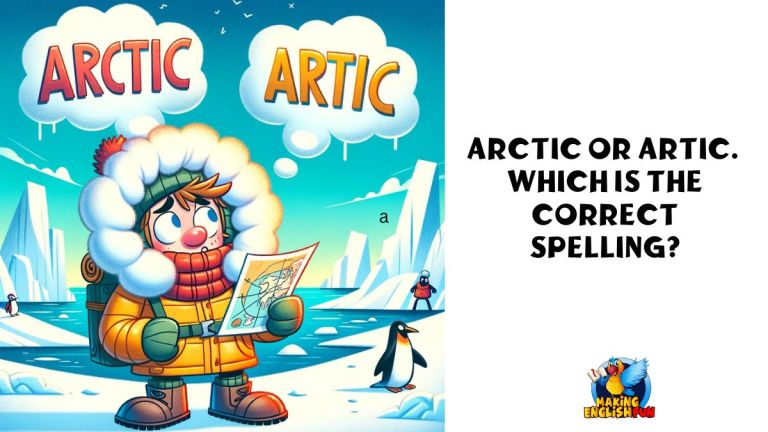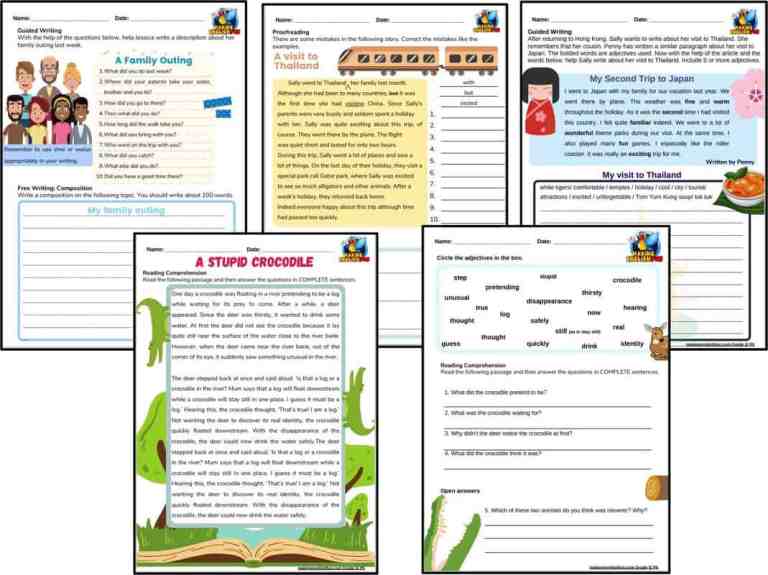The Best ESL Writing Games and Activities.
ESL teacher are always looking for innovative ways to enhance your students’ writing skills?
Our comprehensive guide introduces 17 dynamic writing games, each designed to spark creativity, improve language proficiency, and make writing an enjoyable experience for ESL learners. From crafting Acrostic Poems to participating in a Collaborative Writing Blog, these activities cater to a range of interests and skill levels.
Whether you’re teaching young beginners or advanced adult learners, these writing games are perfect for adding a fun twist to your ESL curriculum.

Just before we jump into these 17 ESL Writing Games and Activities we have the four skills covered on the site. Speaking, Reading, Writing and Listening.
You can access the pages from the links below or click on the image to download them all in one PDF file for $2.99 or the price of a coffee (a good one we admit!)
- The Best ESL Listening Games and Activities.
- The Best ESL Speaking Games and Activities.
- The Best ESL Writing Games and Activities.
- The Best ESL Reading Games and Activities.
Get ready to explore these engaging games that promise to transform your writing lessons into captivating educational adventures!
17 of the Best ESL Writing Games and Activities.
We have given full breakdown for these writing games and activities in each section including resources, numbers and time to play to help you speed up and make sure if these games suit your class and students.
1. Story Starters
Overview:
Story Starters spark creativity by providing students with the first sentence of a story, which they then continue to develop into a complete narrative.
- Setup: Prepare a list of engaging opening sentences for stories.
- Time to Play: 20-30 minutes.
- Number of Players: Individual activity.
- Resources Needed: List of story starters, paper, and pens.
Description of Story Starters ESL Writing Game:
Distribute different story starters to each student.
Students use the given sentence to start their story and continue writing, developing their own plot and characters.
This game helps students practice narrative writing and encourages them to use their imagination.
2. Group Story Writing
Overview:
Group Story Writing fosters collaboration and creativity. Each student contributes a sentence to a communal story, passing it around the classroom.
- Setup: Start with a blank sheet of paper for each group or pair.
- Time to Play: 15-25 minutes.
- Number of Players: Works best in small groups or pairs.
- Resources Needed: Paper and pens.
Description of Group Story Writing ESL Writing Game:
Begin with one student writing a sentence to start the story.
The paper is then passed to the next student, who adds their own sentence.
The process continues, with each student adding to the story.
This game enhances creative thinking and helps students learn how to write cohesively in a group context.

3. Writing Prompts Jar
Overview:
The Writing Prompts Jar is an engaging way to inspire writing. Students pick a prompt from a jar and write a short piece based on it.
- Setup: Prepare a jar filled with a variety of writing prompts on small pieces of paper.
- Time to Play: 20-30 minutes.
- Number of Players: Individual activity, but can be shared in groups after writing.
- Resources Needed: A jar, writing prompts on paper strips, paper, and pens.
Description of Writing Prompts Jar ESL Writing Game:
Each student picks a prompt from the jar.
They then write a short story, poem, or descriptive piece based on the prompt.
After writing, students can share their pieces with the class or in small groups.
This game encourages individual creativity and can cater to a wide range of writing styles and interests.
4. Picture-Inspired Writing
Overview:
Picture-Inspired Writing uses visual stimuli to spark creativity. Students write a story or description based on an image.
- Setup: Select a variety of interesting and thought-provoking images.
- Time to Play: 20-30 minutes.
- Number of Players: Individual activity, but can involve group discussion afterward.
- Resources Needed: Images (photographs, paintings, illustrations), paper, and pens.
Description of Picture-Inspired Writing ESL Writing Game:
Distribute different images to students or display them in the classroom.
Students write a narrative, poem, or descriptive piece inspired by their image.
This activity helps students practice descriptive writing and storytelling, encouraging them to interpret visual information creatively.

5. Dialogue Development
Overview:
Dialogue Development challenges students to write a dialogue for a given scenario, focusing on conversational language and character interaction.
- Setup: Prepare a list of scenarios or situations for dialogues.
- Time to Play: 15-20 minutes.
- Number of Players: Can be done individually or in pairs.
- Resources Needed: Scenarios for dialogues, paper, and pens.
Description of Dialogue Development ESL Writing Game:
Provide each student or pair with a scenario.
Students write a dialogue that could take place in that scenario, paying attention to how people might speak in that context.
This game enhances understanding of conversational language and the nuances of spoken communication.
6. Postcard Writing
Overview:
Postcard Writing is a creative and personal writing activity. Students write a postcard to a friend or family member describing a recent experience or a fictional trip.
- Setup: Have postcard templates or blank cards available.
- Time to Play: 15-20 minutes.
- Number of Players: Individual activity.
- Resources Needed: Postcard templates or blank cards, pens.
Description of Postcard Writing ESL Writing Game:
Students choose a real or imaginary destination they’ve ‘visited.’
They write a postcard to someone describing their experiences, sights, and feelings.
This exercise is excellent for practicing descriptive language, informal writing, and past tense narratives.

7. Word Limit Stories
Overview:
Word Limit Stories challenge students to create a story using exactly a set number of words, such as 50 or 100. This game enhances precision in language use and creativity within constraints.
- Setup: Decide on a word limit for the stories.
- Time to Play: 20-30 minutes.
- Number of Players: Individual activity.
- Resources Needed: Paper and pens.
Description of Word Limit Stories ESL Writing Game:
Inform students of the word limit for their stories.
Students write a short story that precisely meets the word count requirement.
This activity encourages students to think carefully about word choice and sentence structure, fostering conciseness and clarity in writing.
8. Haiku and Poetry Creation
Overview:
Haiku and Poetry Creation encourages students to express themselves through poetry, focusing on simplicity and imagery. Haikus, with their specific structure, are an excellent way to introduce poetry writing.
- Setup: Explain the structure of a haiku (three lines with a 5-7-5 syllable pattern) or other simple poetry forms.
- Time to Play: 15-25 minutes.
- Number of Players: Individual or small groups.
- Resources Needed: Paper and pens.
Description of Haiku and Poetry Creation ESL Writing Game:
Students write their own haikus or simple poems on given themes or topics.
Encourage them to focus on imagery, emotion, and brevity.
This game is great for practicing syllable counting and creative expression in a structured format.

9. Two Perspectives Writing
Overview:
Two Perspectives Writing involves writing about the same event from two different viewpoints. It helps students explore perspective in narrative and develop empathy and understanding for different characters.
- Setup: Provide a basic scenario or event for students to write about.
- Time to Play: 25-35 minutes.
- Number of Players: Individual activity, but can involve group sharing afterward.
- Resources Needed: Scenarios for writing, paper, and pens.
Description of Two Perspectives Writing ESL Writing Game:
Students write about a given event from the perspective of two different characters or observers.
This encourages them to consider how different characters might perceive the same situation differently.
It’s an excellent exercise for exploring narrative voice, character development, and the subjectivity of experience.
10. Email Exchange
Overview:
Email Exchange is a practical writing activity where students write emails to each other, practicing formal or informal language based on different scenarios.
- Setup: Prepare a list of scenarios for which students might write an email (e.g., writing to a friend, a teacher, or for a job application).
- Time to Play: 20-30 minutes.
- Number of Players: Pairs or individual activity with teacher feedback.
- Resources Needed: Scenarios for email writing, paper, or computers if available.
Description of Email Exchange ESL Writing Game:
Assign each student or pair a specific scenario for their email.
Students write an email appropriate for the scenario, focusing on tone, structure, and relevant language.
This activity is great for teaching the nuances of written communication and the differences between formal and informal language.

11. Diary Entry
Overview:
Diary Entry encourages students to write a diary entry from the perspective of a character from a book or a historical figure, enhancing creativity and empathy.
- Setup: Choose characters or historical figures that the students are familiar with or have studied.
- Time to Play: 20-25 minutes.
- Number of Players: Individual activity.
- Resources Needed: Paper and pens.
Description of Diary Entry ESL Writing Game:
Students select or are assigned a character or historical figure.
They write a diary entry from that person’s perspective, reflecting on a day or a significant event in their life.
This exercise helps students explore different perspectives and practice writing in the first person.
12. Descriptive Writing Challenge
Overview:
Descriptive Writing Challenge tasks students with describing an object, place, or person in detail without naming it, focusing on sensory details and adjectives.
- Setup: Select a range of objects, places, or people for students to describe, or let them choose their own.
- Time to Play: 15-20 minutes.
- Number of Players: Individual activity.
- Resources Needed: Paper and pens.
Description of Descriptive Writing Challenge ESL Writing Game:
Students write a detailed description of their chosen subject, using sensory details and vivid language.
The challenge is to convey the essence of the subject without directly naming it.
Other students can guess what is being described, adding an interactive element to the exercise.
This game enhances descriptive writing skills and encourages careful observation and creative expression.

13. Instructional Writing
Overview:
Instructional Writing is a practical exercise where students write clear and concise instructions on how to do something, such as making a sandwich or tying shoelaces.
- Setup: Choose simple, everyday tasks that students can write instructions for.
- Time to Play: 15-20 minutes.
- Number of Players: Individual activity.
- Resources Needed: Paper and pens.
Description of Instructional Writing ESL Writing Game:
Students select or are assigned a task.
They write step-by-step instructions on how to complete this task.
Emphasis is on clarity, sequence, and the use of imperative sentences.
This exercise helps students practice a practical aspect of writing and understand the importance of clear communication.
14. Sequencing Writing Game
Overview:
In the Sequencing Writing Game, students put pictures or sentence strips in order and then write a story or description based on the sequence. This game enhances narrative skills and logical thinking.
- Setup: Prepare a series of pictures or sentence strips that can be arranged to tell a story or describe a process.
- Time to Play: 20-30 minutes.
- Number of Players: Can be done individually or in small groups.
- Resources Needed: Pictures or sentence strips, paper, and pens.
Description of Sequencing Writing Game ESL Writing Game:
Distribute the pictures or sentence strips to students.
They arrange them in a logical order and then write a story or description that follows this sequence.
This game encourages students to think about story structure, cause and effect, and chronological order in writing.

15. Role Play Writing
Overview:
Role Play Writing assigns different roles to students, who then write from their assigned character’s perspective. This game fosters creativity and empathy, allowing students to explore diverse viewpoints.
- Setup: Create a list of characters or roles for students to write from, which can be related to a theme, book, or historical event.
- Time to Play: 25-35 minutes.
- Number of Players: Individual or pair activity.
- Resources Needed: Character descriptions or role profiles, paper, and pens.
Description of Role Play Writing ESL Writing Game:
Assign each student or pair a character or role.
Students write a narrative, letter, diary entry, or dialogue from the perspective of their assigned character.
Emphasis is on understanding and conveying the character’s viewpoint, emotions, and experiences.
This game enhances creative writing skills and the ability to write from different perspectives.
16. Acrostic Poems
Overview:
Acrostic Poems are a fun and creative writing activity where the first letter of each line spells out a word related to a topic. This game encourages creativity and helps students focus on vocabulary related to specific themes.
- Setup: Choose words or topics for the acrostic poems.
- Time to Play: 15-20 minutes.
- Number of Players: Individual activity, but can be shared in groups afterward.
- Resources Needed: Paper and pens.
Description of Acrostic Poems ESL Writing Game:
Assign each student a word or let them choose one related to a current theme or topic.
Students write an acrostic poem where each line starts with a letter from the word.
This game is excellent for exploring vocabulary and encouraging creative expression through poetry.
17. Collaborative Writing Blog
Overview:
Starting a class blog where students contribute posts on various topics is an excellent way for them to practice writing in a real-world context. It enhances their ability to express ideas clearly and coherently.
- Setup: Set up a blog platform that all students can access and contribute to.
- Time to Play: Ongoing, with specific time allocated for writing and posting.
- Number of Players: Whole class.
- Resources Needed: Computer and internet access, a blog platform.
Description of Collaborative Writing Blog ESL Writing Game:
Each student or group of students contributes a blog post on a designated topic.
Topics can range from personal experiences to opinions on current events.
Students practice writing in various styles, from informal to persuasive, depending on the post.
This activity also allows for peer feedback and collaborative editing.
Don’t Forget you can access the pages for all our ESL games and activities from the links below or click on the image to download them all in one PDF file for $2.99 or the price of a coffee (a good coffee we admit!)
- The Best ESL Listening Games and Activities.
- The Best ESL Speaking Games and Activities.
- The Best ESL Writing Games and Activities.
- The Best ESL Reading Games and Activities.

Conclusion
These 17 ESL writing games provide an range of creative and effective methods to enhance writing skills in the ESL classroom.
By incorporating activities like Letter Writing Exchange and Collaborative Writing Blogs, teachers can offer students diverse and practical writing experiences.
These games not only promote language development but also encourage students to express themselves with confidence and creativity.







